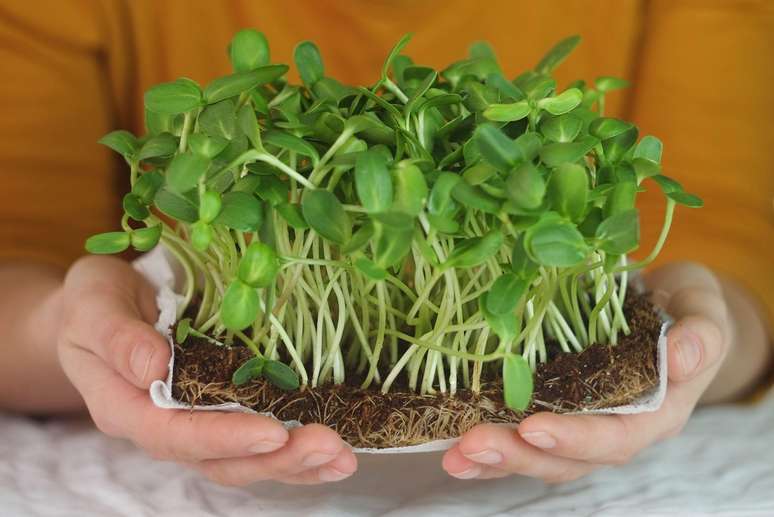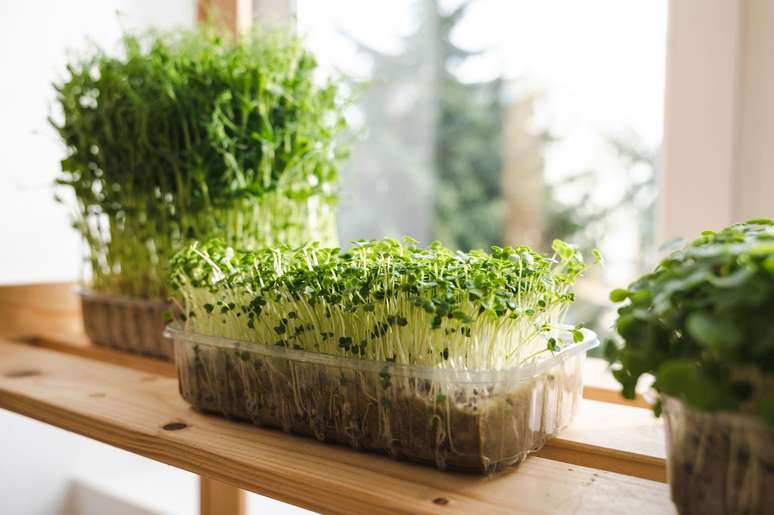Although previously only available in specialty stores or online, these foods can now increasingly be found in department stores.
Although the Mediterranean diet is traditionally the main dietary model in many countries, over the last 50 years we have undergone a Westernization that has been reflected in our dishes.
We all know the benefits of fruits and vegetables, but only 40 countries (representing 36% of the world’s population) have the capacity to consume these foods regularly.
Given the growing interest in healthier lifestyles, the food industry and the scientific community are developing new options to diversify consumption and make these healthy foods more accessible.
And one of these alternatives is microgreens (also known as microgreens or “microgreens“), which are increasingly in the spotlight. Although they were previously only available in specialist shops or online, they are now increasingly found in department stores.
Small but juicy (and very healthy)
Microgreens are obtained from cultivable plants such as vegetables or cereals. They are called this because they are harvested between the 7th and 21st day after the seeds germinate. They measure from 3 to 10 centimeters and have only a portion of the stem, the cotyledons (embryonic leaves) and the first true leaves of the plant.
From an agronomic point of view they require a very short growth period and less maintenance than traditional crops. Its lighting and growing medium needs (soil, coco, hydroponic medium…) are flexible, so it can easily be grown in various locations.
In the gourmet section, these little delicacies offer excellent flavor and interesting texture, as well as exotic aromas and colors. And precisely because of their nutritional qualities they are considered “functional” vegetables, as they have a nutrient content whose consumption is linked to a better state of health.
Because microgreens are not only rich in micronutrients such as iron, zinc, potassium, calcium, manganese or selenium, but also contain molecules with bioactive capacity (phytochemicals), i.e. with beneficial effects on the consumer’s health. The most abundant phytochemicals in these foods are ascorbic acid, phylloquinones, alpha-tocopherol, beta-carotene, phenolic antioxidants, carotenoids, anthocyanins, and glucosinolates.
Although we can also find these compounds in adult plants (the ones we usually consume), the quantities present in the microgreen stage are much greater. For example, red cabbage in the “micro” version contains 260 times more beta-carotene and 6 times more ascorbic acid than the mature plant (quantity per 100 grams of food).
Another of the most interesting nutritional aspects of microgreens is their content of phenolic antioxidants. These secondary metabolites have been correlated to an improvement in metabolic activity (normally altered in case of malnutrition), since they prevent the triggering of free radical oxidation reactions and reduce inflammation. In this respect, broccoli seems to be the winner, as it multiplies by 10 the amount of phenolic antioxidants present in other vegetables.
Environmental allies

Furthermore, these small vegetables are also great allies of the environment. Because of their short growth period and great flexibility, they require less water (between 158 and 236 times less, in the case of broccoli) than mature plants. And they also don’t require fertilizers, pesticides or large vehicles to distribute.
Regarding lighting conditions, it has been observed that the quantity of some secondary metabolites (such as the bioactive compounds mentioned above) varies depending on the type of light.
In fact, one study observed that short periods of exposure to blue light resulted in a higher content of carotenoids, glucosinolates and minerals in “microbroccoli”.
All the advantages
Knowing all this, microgreens could be another tool to address nutritional deficiencies and metabolic changes seen in people suffering from malnutrition. Studies carried out on some varieties have revealed beneficial effects on people suffering from obesity, cardiovascular problems or diabetes.
International organizations recommend consuming five servings of fruit and vegetables per day due to their relationship to a lower mortality rate, a guideline that is not met for several reasons. Given the many benefits they offer, such as ease of cultivation and rich nutrient content, microgreens could help us follow these recommendations more easily.
Although further studies are needed to determine the benefits that these new foods can bring us, their appearance in our gastronomy is promising.
*Laura Isabel Arellano Garcia is a researcher at the University of the Basque Country/Euskal Herriko Unibertsitatea, Spain.
This article was originally published on the academic news site The Conversation and republished here under a Creative Commons license. Read the original version (in Spanish) here.
Source: Terra
Ben Stock is a lifestyle journalist and author at Gossipify. He writes about topics such as health, wellness, travel, food and home decor. He provides practical advice and inspiration to improve well-being, keeps readers up to date with latest lifestyle news and trends, known for his engaging writing style, in-depth analysis and unique perspectives.








